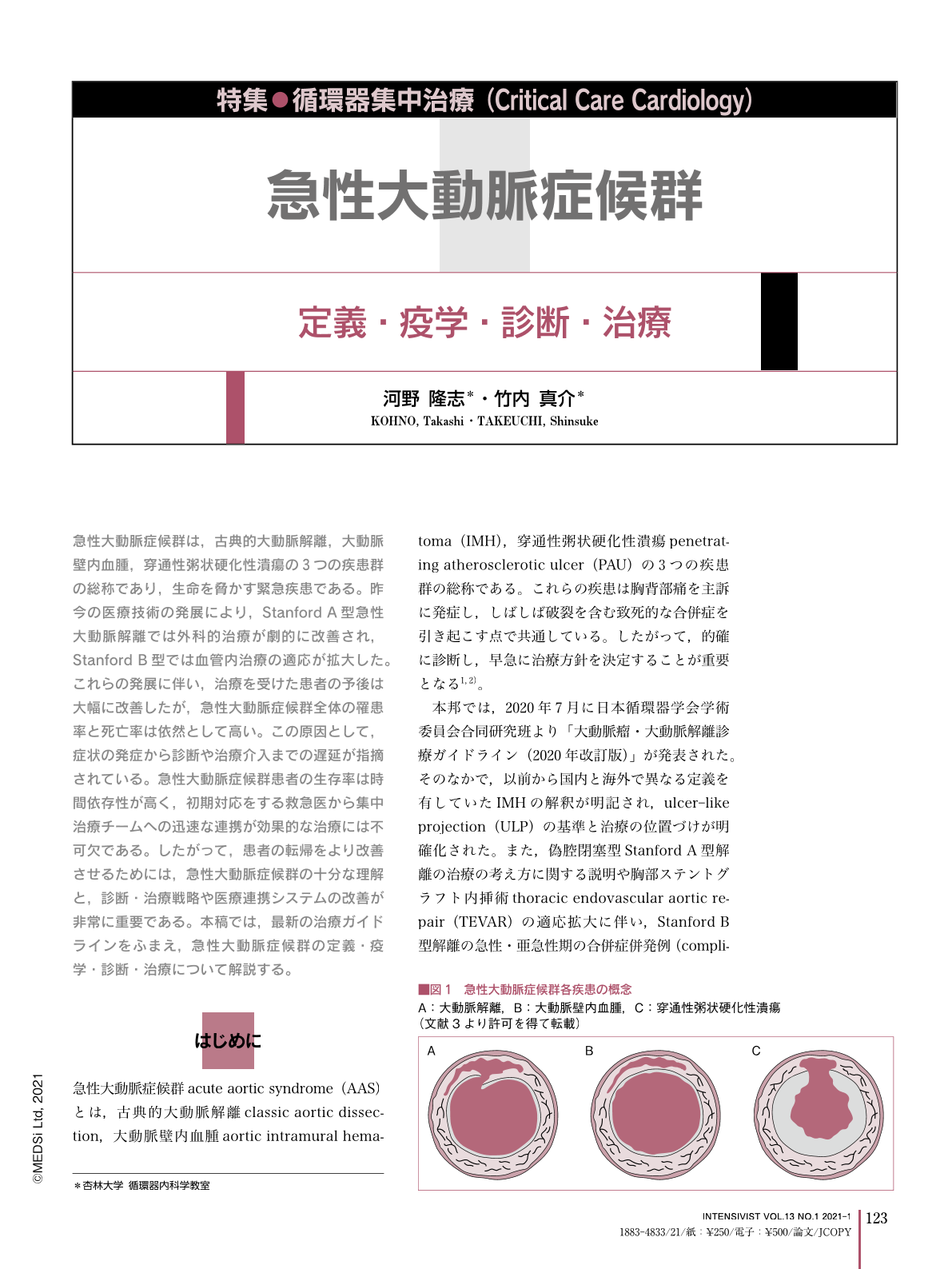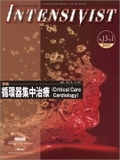Japanese
English
- 有料閲覧
- Abstract 文献概要
- 1ページ目 Look Inside
- 参考文献 Reference
急性大動脈症候群は,古典的大動脈解離,大動脈壁内血腫,穿通性粥状硬化性潰瘍の3つの疾患群の総称であり,生命を脅かす緊急疾患である。昨今の医療技術の発展により,Stanford A型急性大動脈解離では外科的治療が劇的に改善され,Stanford B型では血管内治療の適応が拡大した。これらの発展に伴い,治療を受けた患者の予後は大幅に改善したが,急性大動脈症候群全体の罹患率と死亡率は依然として高い。この原因として,症状の発症から診断や治療介入までの遅延が指摘されている。急性大動脈症候群患者の生存率は時間依存性が高く,初期対応をする救急医から集中治療チームへの迅速な連携が効果的な治療には不可欠である。したがって,患者の転帰をより改善させるためには,急性大動脈症候群の十分な理解と,診断・治療戦略や医療連携システムの改善が非常に重要である。本稿では,最新の治療ガイドラインをふまえ,急性大動脈症候群の定義・疫学・診断・治療について解説する。
Acute aortic syndrome (AAS) is a life-threatening condition including classic acute aortic dissection (AAD), intramural hematoma, and penetrating atherosclerotic ulcer. Recent developments in technology have led to dramatic improvements in surgical approaches to Stanford type A AAD and expanded indications for endovascular treatment of type B AAD. With these developments, the prognosis for patients undergoing treatment of AAD has improved significantly. However, the overall morbidity and mortality of patients with AAS remains high which appears to be related to a delay from the onset of symptoms to definitive diagnosis and therapeutic intervention. Since the survival rate in patients with AAS is strongly time- dependent, prompt cooperation from the first-responding emergency physicians to the intensive care team is essential for effective treatment practices. Therefore, improvements in our understanding of AAS, diagnostic and therapeutic strategies, and medical cooperation are extremely important as these can lead to further improvements in patient outcomes. This section describes the definition, epidemiology, diagnosis, and treatment of AAS, taking into account the latest treatment guidelines.

Copyright © 2021, MEDICAL SCIENCES INTERNATIONAL, LTD. All rights reserved.


